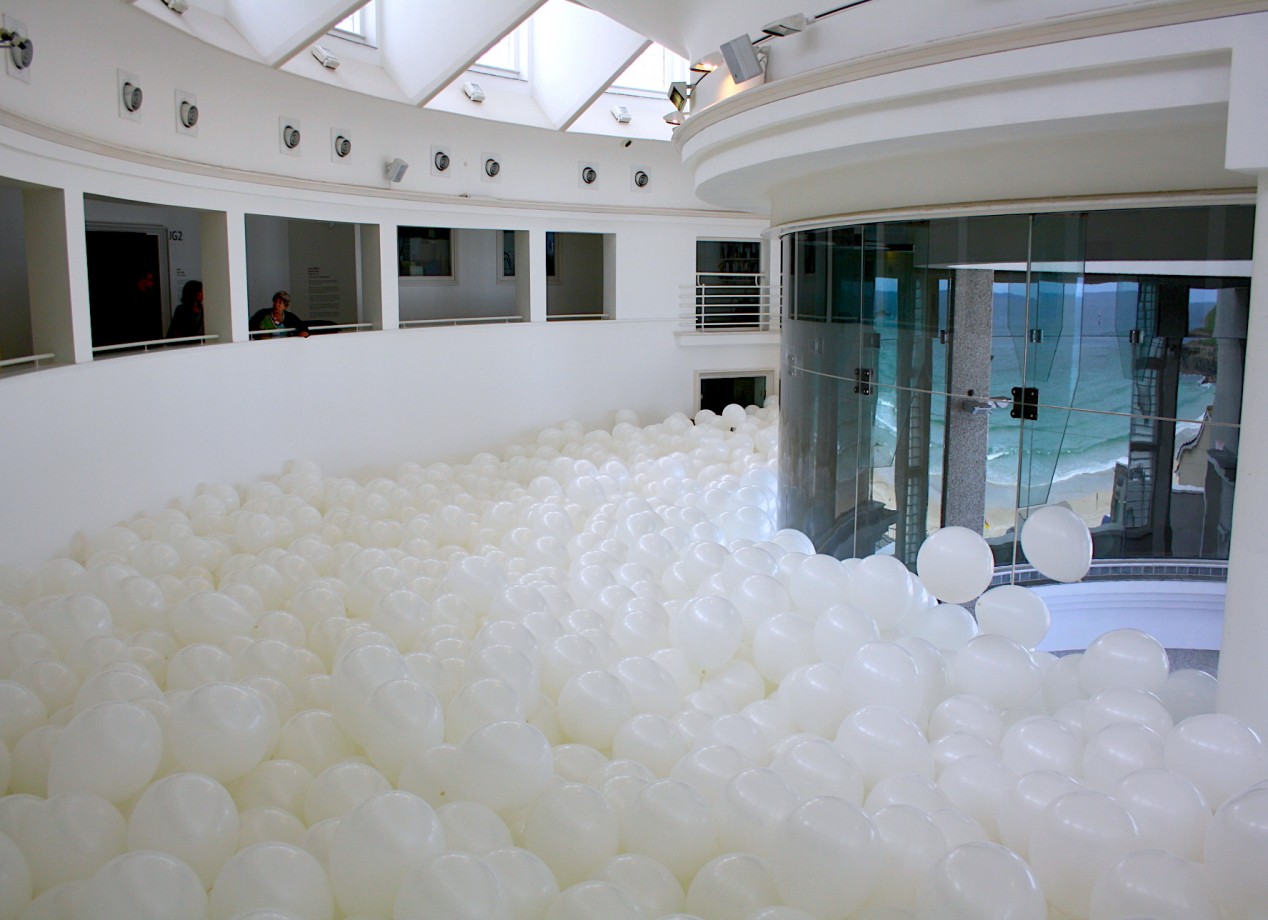On the occasion of a talk Martin Creed gave at Sotheby's Institute in London, MA Contemporary Art students offered their thoughts on the artist's style, impact, and some of the his most rememberable works. Here, Beverley Harrison discusses Work No. 360.
Play fills the world imperceptibly, a reality experienced, through the performance of collaborative gestures in Martin Creed’s installations. As sculpture sculpts mass in space, so Martin Creed’s balloon installations are shaped by the architecture that contains and sculpts their play-filled space. According to a 2011 interview, Creed wanted “to make visible what is invisible—the space between people.” The creative act is a playful one, shared by all.
In Work No. 360, Half the air in a given space (2011), white balloons pour into an open foyer, the crescent-shaped front space at Tate St. Ives, overlooking the sea. Although the architecture’s arc shapes the balloon-mass’s volume, the balloons are malleable, white and translucent, and ephemerally cloud-like. The evanescent white balloons bob and billow, like the sea waves beyond the window. Balloons, the everyday mass-produced, cavort with space and time to become an experiential medium, fluid and fluctuating like the sea.
Both architecture and balloons give form to the impalpable, empty space—to the air—the air we all breathe that inflates yet displaces and deflates the balloons, over time. The formal configuration changes with the visitors’ every move, and with each balloon’s swoosh, jostle, collide, with other balloons and human bodies—a chain reaction. Thus, the installation is perpetually recreated by choice and chance encounters with visitor-performers, to enact and embody transience.
Sensory awareness is heightened through touch, sound, and smell. Sightlines are disrupted, disorientating us. The visitor becomes an integral part of the artwork, living art with their every breath and gesture. Art is all around us, immersing and submerging us, being created and reformed by our gestures and actions.
In Work No. 227, The lights go on and off (2000) empty space also becomes a medium of portent. Space becomes light and dark, day passes into night, light into death, darkness into emptiness. This emptiness reverberates rhythms, endless heartbeats, as lights go on and off—a playful act that resounds. And it encases us, with its art historical allusions to light and shade, of which we are all a part. We become players on this empty stage. Inclusivity spreads, for we all have associated memories.
As Creed’s Work No. 232, the whole world + the work of art = the whole world (2000) asserts, in airy zen-like neon white: we participate in art’s creation, and art is situated in our lives.
Written by Beverley Harrison, MA Contemporary Art student
